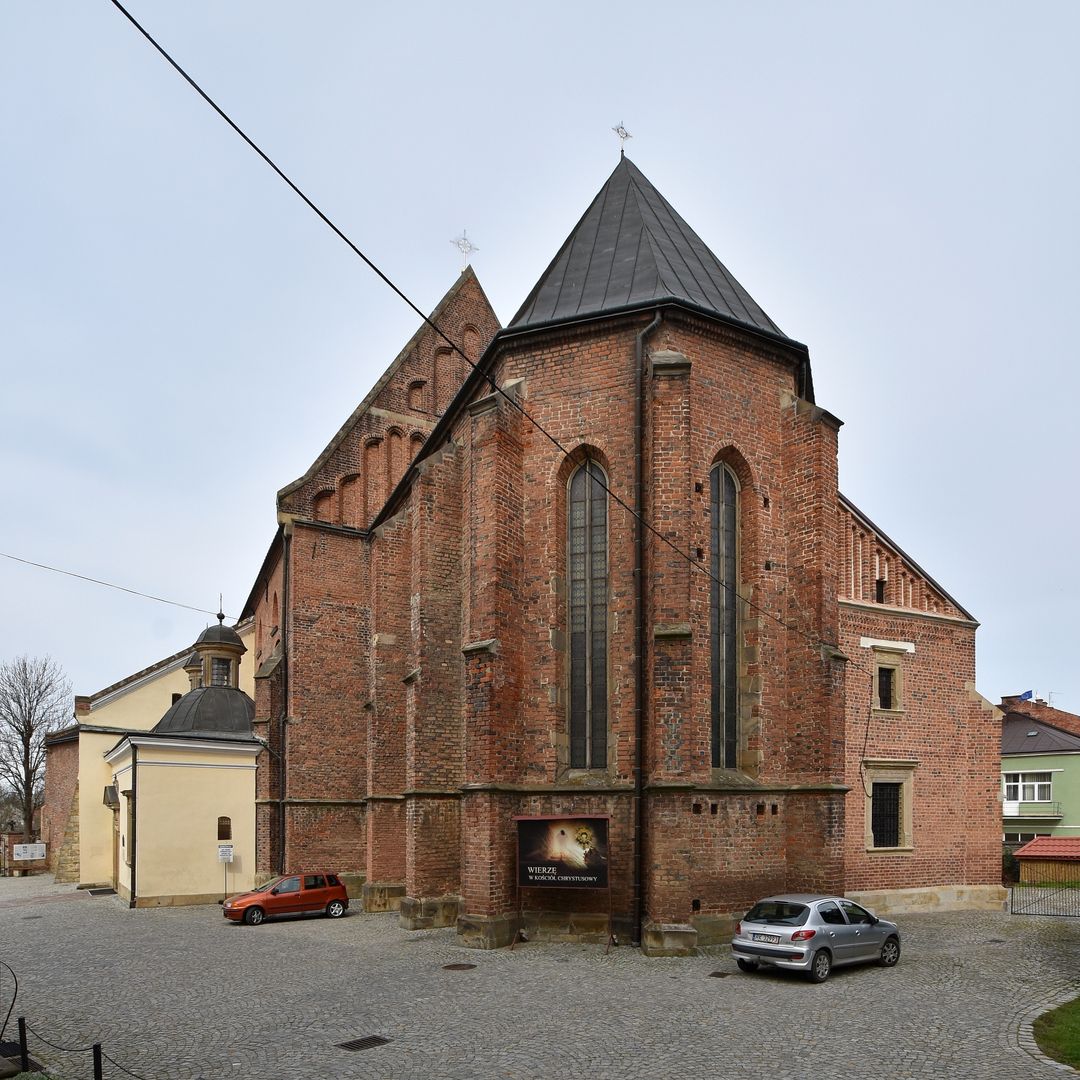Collegiate Basilica of the Holy Trinity in Krosno
6.03

Overview
The Collegiate Basilica of the Holy Trinity in Krosno, commonly known as the Fara of Krosno, is a historic Roman Catholic church serving as the city's main temple, with a tradition dating back to 1342. The church's architecture reflects Gothic and Mannerist styles; original elements such as rib vaults were expanded in the 15th century with the addition of chapels and late Gothic net vaults. In the 17th century, funded by Wojciech Robert Portius, the church underwent a significant renovation, resulting in a new interior, including a barrel vault in the nave and the marble Portius family chapel. The basilica's interior is adorned with numerous works of art, including sculptures, frescoes, and paintings, such as the late Mannerist main altar with a work by Tomasz Dolabella and the epitaph of Zofia Kanafolska. Particularly noteworthy are the mansional stalls with biblical paintings and numerous artworks related to the theme of death. The bell tower, constructed between 1637 and 1651 and modernized in the late 19th century, houses some of the largest bells in Poland. The church has survived many historical events, including a fire in 1638 that did not cause significant damage. In 2004, sarcophagi of bishops were discovered in the crypt, enriching knowledge about the region's history. The Fara remains not only a place of worship but also a witness to Krosno's rich history, associated with many noble families, especially the Portius family, who remain patrons of many architectural elements in the church to this day. In 2012, a plaque commemorating the victims of the Katyn massacre was unveiled, highlighting the basilica's role as a place of remembrance. It is also worth noting that the church features various chapels, including the Chapel of St. Adalbert and the Chapel of Our Lady of the Scapular, richly decorated and funded by local families. The Fara is a place that combines religious, cultural, and historical elements, forming an important part of Krosno's heritage.
Location
2025 Wizytor | All Rights Reserved